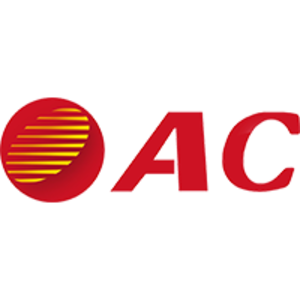LANGUAGE↓

News & Policies

Understanding China’s latest transfer pricing adjustments
China’s State Administration of Taxation (SAT) has released the Administrative Measures on Special Tax Investigation Adjustments and Mutual Agreement Procedures in the Public Notice [2017] No. 6 (Bulletin 6).
Bulletin 6, released on March 17, 2017, updates China’s rules on special tax investigations, special tax adjustments and mutual agreement procedures. When it becomes effective on May 1, 2017, it will supersede the corresponding provisions under the existing transfer pricing regulations, Guo Shui Fa [2009] No. 2 (Circular 2).
According to the SAT, the purpose of Bulletin 6 is to amend and improve existing rules on special tax investigations, special tax adjustments and mutual agreement procedures in line with the general principle of "aligning transfer pricing outcomes with value creation" advocated by G20/OECD in the Base Erosion and Profit Shifting (BEPS) Action Plan.
SAT also expects to strengthen the monitoring of taxpayers’ profit levels and to improve taxpayers’ compliance through implementation of Bulletin 6, as well as the inter-company transaction reporting and contemporaneous documentation requirements under the Public Notice [2016] No. 42 (Bulletin 42).
Key features
Bulletin 6 contains many significant provisions that are expected to impact how multinationals implement their transfer pricing policies and practices in respect of subsidiaries in China. In particular, Bulletin 6 contains far-reaching measures to:
• Encourage self-review and voluntary adjustment by taxpayers: As well as empowering local tax authorities to identify taxpayers with special tax adjustment issues, it also encourages taxpayers to conduct voluntary adjustments, either upon receipt of notification from the tax authorities or by way of a self-review.
• Expand the scope of taxpayers with high-risk features for special tax investigations: In addition to taxpayers with long-term losses, consistently low profits, highly volatile profits and/or other usual transfer pricing risk features, the Bulletin also identifies as high-risk taxpayers those that (i) earn a profit below their industry average; (ii) engage in inter-company transactions with affiliates located in low-tax countries/region; or (iii) earn a profit which is not commensurate with their business risks and functions.
• Clarify the special tax investigation procedures and burden of proof: Bulletin 6 sets out the rights and obligations of the investigated taxpayer and reinforces the burden of proof on the investigated taxpayer. Taxpayers are obligated to provide relevant overseas information with indication of source, and also may be required to notarize the overseas information. At the same time, tax authorities are guided on what to require and how to collect, review and document paper, electronic or verbal evidence provided by the investigated taxpayer.
• Revise guidelines on comparable analysis: Cost savings and market premiums are identified as two special geographic factors to be evaluated in comparability analysis in China, in line with Actions 8 through 10 of the G20/OECD BEPS Action Plan.
• Revise guidelines on use of transfer pricing methods: The Bulletin introduces the valuation method for intangibles adopted in Action 8 of the G20/OECD as an additional transfer pricing method in China. Under this new method, intangibles can be valued based on market price, replacement cost and projected revenue.
• Include guidelines on assessment of intangible-related inter-company transactions: The new guidelines require proper allocation of intangible related returns based on each parties’ contributions to the development, enhancement, maintenance, protection, exploitation and promotion of intangibles (DEMPEP functions).
• Strengthen administration on inter-company services: Tax authorities may disallow the deduction of services fees related to six types of "Non-Beneficial Services". Such services include duplicated services, shareholder activities, services that provide benefits to the Chinese subsidiary only through "passive association", services with overlapped compensation, services that are irrelevant to the recipient’s business activities, and services that are not directly beneficial or would not have been purchased in an uncontrolled business environment.
• Clarify principles for working capital adjustment: The Bulletin limits the application of a working capital adjustment so that it can be applied only to assess the arm’s length return of a toll processing service provider, subject to certain conditions. If the working capital adjustment results in a change to the profit level of over 10 percent, reselection of comparable companies is required.
• Clarify expectation on profit level of single-function entities: Single-function entities that only provide contract R&D or contract manufacturing services should not bear any market risks and should earn a stable and reasonable profit level. If a single-function entity suffers losses derived from mismanagement, underutilization of capacity, poor sales or R&D failure, tax authorities may deny such losses and impose a special tax adjustment.
• Clarify and standardize mutual agreement procedure: Bulletin 6 outlines a specific mutual agreement procedure, and clarifies the rights and obligations of tax authorities at different levels in the procedure. It also emphasized that the tax authorities may reject a taxpayer’s application or terminate a mutual agreement procedure, if the taxpayer fails to provide relevant and necessary information required by the tax authorities.
Technical details
When analyzing and assessing the related party transactions of the enterprise under investigation, the tax authorities will, in consideration of the functional risks of the respective parties in the transactions, select the party with relatively simple functions as a test target. In the course of such analysis, tax authorities should give priority to the use of public information, but may also use information not made public.
In addition to the five traditional transfer pricing methods listed in the old measures, the new Measures introduce valuation methods (cost, market, and income methods) and the term “other methods that can align profits with economic activities and value creation”, which must be both applied consistently with the arm’s length principle.
Investigation implementation procedure
The measures encourage tax payers to adjust tax payments by themselves before being subject to an investigation. Upon receipt of the special tax adjustment risk warning by the enterprise or discovery of its special tax adjustment risks, the enterprise may take the initiative to make adjustments and top up tax payments through the new “Special tax adjustment self-payment form”. The Measures support this by removing the 20 day limit for tax payer to submit the corresponding-period materials.
Further, the Measures also alter the procedure of the special tax investigation, as well as some requirements for materials and evidence. For example, electronic data can now be regarded as evidence in an investigation. Although the overall structure remains similar, the implementation details of special tax adjustments tend to be more cautious in the new Measures.
If you have any questions, please send the email to me.
Ms. Joy Ni
TEL: 0086-21-63731202
Email: joyni@accontra.com





